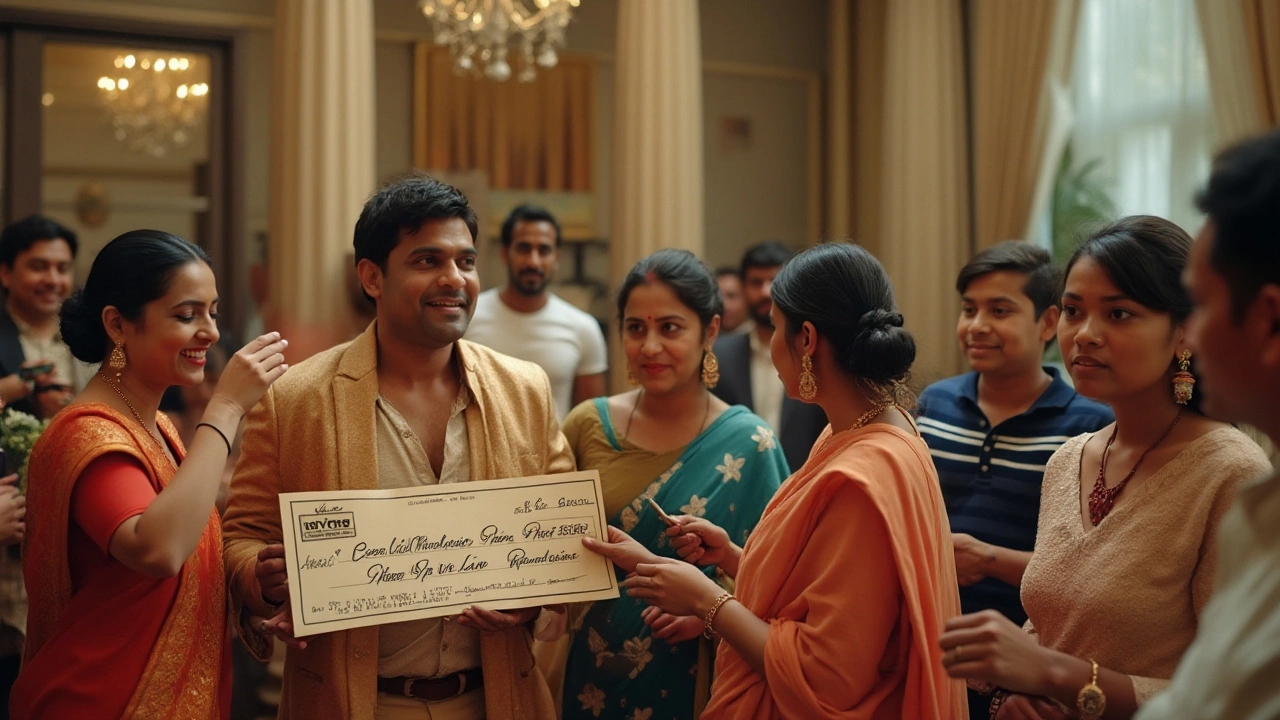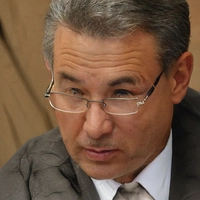The question of who donates more to charity—those with wealth or those with less—continues to fascinate many. It's not just a matter of numbers; it's about understanding the intentions and social contexts of those who give. While high-profile figures often dominate the news with their philanthropic contributions, there's an interesting narrative when you look closer at the statistics. In fact, people with lower incomes often donate a larger percentage of their resources to those in need.
Exploring this dynamic invites a deeper conversation about what motivates people to give. Is it a sense of personal responsibility, or perhaps a way to make a tangible impact in the world? By examining the motivations and methods behind different giving practices, we can uncover insights into the nature of generosity across diverse economic backgrounds. Let's delve into the dynamics of giving and discover who truly leads the charge when it comes to philanthropy.
- The Wealthy Donors: Meeting the Expectations
- The Unsung Heroes: Charitable Giving Among the Less Affluent
- Motivations Behind Giving: What Drives Philanthropy?
- Impact versus Intention: How Giving Differs
The Wealthy Donors: Meeting the Expectations
The role of wealthy individuals in philanthropy is often a subject of public scrutiny and fascination. With their actions under the spotlight, the affluent are frequently seen as standard bearers for charitable giving. They are expected not only to contribute sizable amounts but also to lead initiatives that spur societal changes on a grand scale. This attention can transform their donations into more than just acts of kindness, making them a tool for crafting public personas and cementing legacies.
The impact of large donations is palpable. We witness billionaires launching foundations dedicated to tackling specific societal issues such as education reform, healthcare accessibility, and environmental protection. Many of these initiatives arise from the intersection of personal interest and public need, where wealthy donors recognize both the privilege and responsibility bestowed upon them. Take Bill Gates and Warren Buffet, for example. Their Giving Pledge, signed by numerous billionaires, commits the signatories to donate a majority of their wealth to charitable causes, influencing not just those in their circle but also the perception of wealth in philanthropy at large.
Philanthropy expert Lucy Bernholz once remarked, "The act of giving amongst the rich serves as a family coat of arms, challenging others to equate one's virtue with one's charitable actions." This symbolic nature of giving among the affluent often imposes a moral obligation, intertwining personal success with the public good.
While some criticize wealthy donors for potentially using their contributions as mere tax write-offs, there's no doubt that their investments can catalyze large-scale reforms. These influential figures often have the resources to support innovative projects, risks that smaller donors couldn't justify. Their donations can help drive awareness and encourage additional funding from other sectors, including governments and smaller NGOs. Yet, their wealth sometimes raises questions about balance—influence versus intention, especially when their giving affects policy or social direction.
On the ground level, the repercussions of wealthy philanthropy can be far-reaching. Consider the philanthropic efforts of individuals like Elon Musk, who, through projects like SpaceX and Tesla, advocates for sustainable innovation. The technology and sustainability sectors frequently benefit from such wealthy patronage. Often, these investments yield a multiplier effect, patching areas of governmental neglect and catalyzing systemic movement across the globe. Although their motivation might not always align perfectly with public interest, the scale and reach of their giving can't be undervalued.
Below is a table illustrating some of the wealthiest donors and their respective contributions over the last decade. This provides a glimpse of how substantial wealth can direct pivotal changes in society:
| Name | Notable Contributions | Cause |
|---|---|---|
| Bill Gates | $50 billion | Global health and development |
| Oprah Winfrey | $2.6 billion | Education and leadership program |
These examples demonstrate how the wealthy manage to meet or exceed societal expectations. Their donations can alter priorities, stimulate innovation, and provide essential services, reflective not only of their resources but also of their capacity to change the narrative of philanthropy. But, as always, the true measure lies in the balance between visibility and intention, a dynamic that continues to evolve.

The Unsung Heroes: Charitable Giving Among the Less Affluent
When we talk about philanthropy, the images of billionaires cutting multi-million dollar checks dominate our mindscape. However, if we take a closer look at the fabric of charitable giving, there's an extraordinary tale to be told about those who give the most, even though they might have the least to spare. The less affluent—those slogging through their budgets and living paycheck to paycheck—often hold the torch of charity aloft even higher than many expect. This paradoxical realization stems from both cultural and social impulses, deeply rooted in community and empathy.
Consider the statistics, quite revealing on their own. Research indicates that households earning under $50,000 a year give a larger portion of their income to charity compared to their wealthier counterparts. This isn't just another surprising statistic; it questions our preconceptions about who is more inclined towards donations. Their generosity defies logic at times surprisingly tied to human connection and shared experience. For them, giving is not solely a financial transaction but a gesture stemming from a personal narrative, one they might have experienced or witnessed closely.
The driving force behind such contributions can be attributed to several factors. Empathy, born out of shared hardship, often forms the backbone of their willingness to contribute. This cohort, having faced difficulties themselves, resonates deeply with the struggles of others, prompting them to share despite their limited means. It’s not just about largesse; it’s about fostering a sense of community and solidarity with those who walk a similar path.Philanthropy is often perceived as an exclusive club of the wealthy, but for these individuals, it’s a way of life—a moral duty that transcends their immediate circumstances.
"The poor are often embedded within a community that values mutual aid and support," said a recent study in the Journal of Economic Behavior & Organization, highlighting the invisible threads of support that thrive in less affluent societies.What is particularly fascinating is how diverse and varied the recipients of these contributions can be. Whether it's supporting a neighbor facing medical expenses or donating time and resources to communal endeavors, the range of their donations can be jaw-droppingly broad. They donate both formally and informally, through local church groups, community fundraisers, and direct support to individuals in need.
Not to mention, the less affluent’s approach to giving is not just about monetary contributions. Often, they lead with involvement, giving time, effort, and skill—qualities that are equally significant in impacting change. Across regions, countless stories emerge of families choosing to help in kind, offering what they can when their pockets run dry, proving how invaluable their overall contribution is to the mosaic of philanthropy.

Motivations Behind Giving: What Drives Philanthropy?
Philanthropy isn't solely the domain of the rich; it transcends financial boundaries and penetrates the core of human compassion. The reasons behind why people choose to donate their time, money, or resources to charitable causes are as varied as the individuals themselves. Some give out of a sense of duty or obligation, influenced by cultural or familial expectations. Others may be driven by personal experiences that have deeply affected them or their loved ones. We cannot ignore the strong moral convictions held by many, which guide their decisions in supporting causes they believe in. For numerous individuals, philanthropy is an expression of gratitude or a way to create a positive emotional impact in their own lives.
A fascinating aspect of charitable giving is the interplay between personal benefit and altruism. Even when donations are made out of genuine selflessness, studies have shown that the act of giving can trigger a "helper's high," an increase in dopamine levels in the brain that leads to feelings of well-being and joy. For wealthy donors, philanthropy might also serve as a powerful tool for legacy-building, a way to influence how they are remembered by society long after they are gone. This desire is not limited to the affluent; anyone can leave a mark through thoughtful, impactful donations.
Interestingly, social influences and community involvement play a significant role in motivating donations. When individuals see their peers engaging in charitable acts, they are often inspired to do the same, creating a ripple effect throughout a community. Research has indicated that peer pressure, when applied positively, can significantly boost fundraising efforts and charitable involvement across large groups. Strong social connections within a community foster an environment where giving becomes the norm, rather than the exception.
"Philanthropy is not about money. It's about using whatever resources you have at your fingertips and applying them to improving the world," remarked Melinda Gates, a renowned philanthropist whose insights reflect a shared human understanding of giving. This quote encapsulates the effectiveness of resource allocation, regardless of one's financial standing.
Then there are the more pragmatic motivations, such as tax deductions or the societal prestige that comes with being associated with philanthropic endeavors. While such incentives might not be the primary motivations for all, they certainly contribute to shaping modern philanthropic landscapes. Organizations and institutions often offer recognition for donations or patronage, which can be appealing to donors who value public acknowledgment.
Understanding the tapestry of motivations behind philanthropy helps not only in appreciating the act itself but also in crafting effective engagement strategies for charities. By aligning campaigns with potential donors' motivations, charities can better connect with individuals who are ready to make meaningful contributions. Both small and large donations collectively spur change and are essential to advancing the goals of any philanthropic initiative.

Impact versus Intention: How Giving Differs
The patterns of philanthropy can often be understood by examining the dual pillars of impact and intention. On the one hand, the ability of a donation to enact meaningful change is frequently highlighted as the paramount goal. But when we peel back a layer, intention reveals itself as an equally powerful driving force. Wealthy individuals might be inclined to contribute large sums to causes that promise a significant, quantifiable impact. These donations often come with expectations of seeing results, such as advancements in medical research or the construction of educational facilities. The measurable impact plays a crucial role in their decision-making process, where outcomes are as important as the act of giving itself.
On the other hand, those with fewer resources may find that their intentions are more focused on community and solidarity rather than scale. The impact of a smaller donation, while not as visibly grand, can carry deep personal significance. Research suggests that those with lesser means often prioritize causes they have a personal connection to, such as local charities or initiatives within their own neighborhoods. In these cases, the intention is less about altering the broader landscape and more about supporting and nurturing the immediate environment. This type of giving is often rooted in a desire to help those closest to them, embodying a spirit of communal care over statistical significance.
"The fact is, the wealthy can afford to give bigger chunks of money, but those with less income sometimes give more of themselves when they donate," remarks a report from the National Philanthropic Trust.
The dichotomy of intention versus impact becomes even more intriguing when we consider the psychological perspectives involved. People in lower income brackets are often found to display high levels of empathy and understanding towards those in similar situations, fueling their intention to give, even when it's financially straining. Meanwhile, affluent donors might approach their contributions strategically, treating philanthropy like an investment in societal progress. Both approaches are valid, yet the motivations are worlds apart. While one seeks tangible outcomes that lead to widespread societal improvement, the other cherishes the latent impact that strengthens bonds and enriches the lives of community members.
Beyond these perspectives, an interesting facet is how both groups perceive the effectiveness of their contributions. Wealthy donors might have access to reports and studies that document the efficacy of their investments, providing a sense of fulfillment backed by data. These find favor in the metrics-driven mindset that often accompanies financial success. Meanwhile, less affluent donors may gauge their impact through personal stories and direct interactions within their community, measuring success on the emotional and relational levels rather than spreadsheets. Each form of assessment offers valuable insight into what drives people to give and how they envision their legacy of philanthropy.





